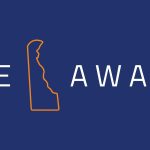Adequately securing any cannabis operation is a difficult task, but securing where the public interacts with cannabis operations, is even more intense. Interacting with cannabis customers either within a cannabis retail store, or within a cannabis consumption space, requires your security plan to be well thought out, documented, and able to grow and change as you operate. Knowing the key security challenges when securing a cannabis retail space and a cannabis consumption space are paramount to operating successfully.
The main difference between a retail storefront and a consumption space is the amount of time a customer spends in the space, and of course cannabis can only be consumed on site at the consumption lounge. For this reason, each type of operation needs to focus on different security/operational threats. A dispensary will likely see far more individual customers than a consumption space, but the consumption space will have customers on site longer. While cannabis retail is primarily focused on theft/diversion, customer time spent on site, as well as compliant sales (valid customer I.D., possession limits etc), consumption spaces need to also focus primarily on consumption amounts of customers, and ensuring that they leave with cannabis stored properly (if allowable).
Security Challenges for Cannabis Dispensaries
For retail cannabis stores, the baseline strategy is higher sales, and less time spent shopping per customer. You cannot effectively have a high-flow of customers going in and out of your dispensary if you do not have appropriate security protocols and systems in place. Identifying key “choke points” in customer flow also help to identify where security may need to be bolstered. To do this you first need to have an efficient way of “in-processing” every customer. Whether that is simply scanning an I.D. or doing any kind of paperwork, it needs to be secure and efficient. If you have customers waiting in line in an “in-processing” area, that can be a security risk. You do not know if all of the customers have the appropriate documentation to shop, and it is far more difficult to monitor a large number of people in a small area. Keeping the customers moving through this space is important to do correctly every time, both for compliance and security.
It is important for both cannabis dispensaries and cannabis consumption spaces to not only know the maximum capacity of customers allowed in the space (per code), but also to know how much time they are spending in the space. For dispensaries, customers who spend a lot of time in the store are most likely either: having difficulty finding products (in which case they need to be helped by staff) or they are potentially a security threat (currently stealing, “casing” the operation, or waiting for an opportune time to commit a crime). Generally, with obvious security measures such as stationed as roving guards, signs that say “you’re on camera”, and keeping products off the sales floor, it is easy to “keep people honest”, but keeping an eye on customers who spend a longer than normal amount of time in the cannabis retail space is important.
Security Challenges for Consumption Lounges
While providing good customer service is important to maintaining your customer base and a good business at a consumption lounge, security is paramount in order to keep your license to operate. Never prioritize customer service over security, if a person is a security risk, you need to address them and the risk and take action.
For cannabis consumption spaces, the priority is getting customers in and serving cannabis as quickly (and compliantly) as possible, and to monitor the time spent on-site (both for security, and for the sake of “turning tables” for more revenue). One of the major security challenges at a consumption lounge can be intoxicated customers if steps are not taken to prevent overconsumption.
Consumption spaces should take notes from every bar that serves alcohol and have a taxi/uber service that is available for customers so that if they are too intoxicated to be on-site (and certainly to drive) that they have a safe way to leave the space. You can avoid most instances of “overconsumption” or intoxication by making sure you do not over-serve customers (much like a bar), and use your ability to “cut them off” before they overconsume. While it is hard to define how much is too much for each individual cannabis user, it is important to at least have guidelines for interaction with customers about consumption amounts, so as not to escalate the situation into a potential security threat. Pay attention to: drowsiness, milligrams of cannabis consumed (if edible), cannabis consumed a lot at once, slurred speech, dizziness, balance etc. If any are in unacceptable levels, have a plan to address the customer, get them closed out, and get them a ride home. Mitigating instances of overconsumption is the best way to prevent this from happening, and keeping your consumption space more secure.
Security Challenges for Both
Both dispensary and consumption lounge operations need to also prioritize where customers can be. This will likely consist of limited access (customers allowed with 21+ I.D. or medical approval), or restricted access (only employees or “officials” can access) areas. It is important to make it obvious to the customer where they are, and are not allowed to be. This can be done verbally as they enter the space, as well as with signs near the points of access to each area. Especially with consumption spaces, people could potentially be confused after they consume cannabis if it is not obvious to them where they are not allowed.
It is important for both cannabis dispensaries and cannabis consumption spaces to have thorough security plans that address potential security challenges and how to act when confronted with one. These plans need to be present and apparent to the staff, and they need to grow/change as the business operates. The initial plan for security may need to be augmented or adjusted once you are operating in the space in order to maintain best security practices. They should be audited at least quarterly, and initially they should be audited within the first month of operation. The point at which cannabis companies interact with the public (customers) is a potential security risk every time, and requires them to be vigilant about their security practices. Maintaining these practices is paramount to a secure and successful cannabis dispensary or cannabis consumption space.
How Can Sapphire Risk Help?
Tony Gallo and the team at Sapphire Risk Advisory Group are prepared to help with ensuring installed security is compliant and cost-efficient. Follow us on social media to stay up to date with cannabis industry updates!
Author

If you are a current operator (or want to be) Tyler Stratford can help!
When Tyler got out of the Army as a 23 year-old, he witnessed cannabis save the life of his grandmother, who was unable to treat her back pain with opioids. He then began working for one of the first licensed vertically integrated cannabis companies in Boulder, Colorado, Boulder Kind Care. He helped them relocate and build their cultivation facility, including equipment selection and installation. For a few years he worked his way through almost every one of the positions across the cannabis vertical. He has held cultivation management positions, dispensary positions, and eventually was the director of compliance for Boulder Kind Care. After helping a couple other local vertically integrated companies transition from Medical to Dual/Medical & Recreational companies in the Colorado market, he then went to work for MJ Freeway as an Operational Implementation Specialist. Having been a beta user of MJ Freeway and the only one with perspective on “both sides” of the software, he was responsible for the implementation and “go live” of well over 400 operations in the cannabis industry, across the United States, Canada, Puerto Rico, and Spain, including the first 4 dispensaries in 4 states (NV, MN, AK, FL). He has spoken at countless conferences and events, trained thousands of operators on both cannabis plant/product knowledge, compliance, tools/software, and helped create a lot of their educational content and SOP documentation. After 3 years, he then went to work for Canna Advisors (one of the most prestigious, professional, and successful consulting companies in the industry) as their Director of Client operations, advising both pre-license and post-license clients on operational set-up and efficiencies. He also created their Strategic Partner Program, negotiating deals for their high-quality clients with vendors of ancillary cannabis products. He even represented a client as an expert witness in an appeals case where he spent over an hour taking questions from the State AG, and they got the license. Since then, he has helped multiple start-ups as Director of Operations and Chief Strategy Officer, primarily in the California Market.
- 3D Dispensary Security Tour
- Natural Medicine Security Plan for Colorado Psilocybin Application

- New Jersey: Cannabis Consumption Area Application

- Cannabis in the US Virgin Islands

- Case Study: New Jersey Cannabis Retailer

- Delivery Vehicle Security

- Crime Prevention Through Environmental Design (CPTED)

- Schedule III: Cannabis Regulatory Disruptions Ahead

- Perfect Your Delaware Cannabis Business License Application With a Security Consultant

- Our Story: Sapphire Risk Advisory Group

